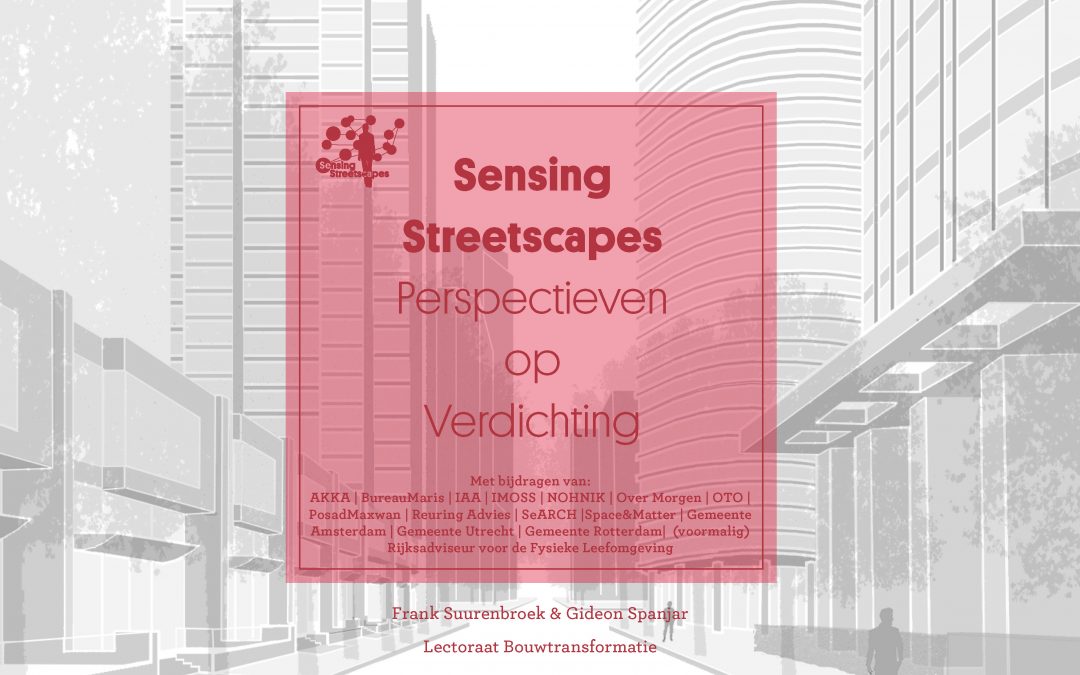Amsterdam University of Applied Sciences Presents Booklet: Perspectives on Urban Densification
With a booklet, the Sensing Streetscapes research team offers tools for making crucial choices in the current densification task of Dutch cities.
The research team at the Chair of Spatial Urban Transformation presents the Sensing Streetscapes: perspectieven op verdichting (Sensing Streetscapes: Perspectives on Densification) booklet. This is one of the outcomes of the Sensing Streetscapes research project. The booklet contains many perspectives on and lessons learned from Dutch spatial planning firms and international knowledge institutes on how to achieve the human scale in design. Together, the different perspectives provide a cross-section of contemporary urban planning and (landscape) architecture and thus provide guidelines for making crucial decisions for the current densification assignment of Dutch cities.
The publication is a collection of interviews with professionals working for innovative design firms, senior municipal urban planners, a former government adviser and international academic pioneers in the field of neuroarchitecture. It also includes an exploration of nine special Chinese residential projects as well as insights drawn from the final seminar and excursion to the Zuidas in Amsterdam.
Collection of Interviews
The interviews provide an insight into densification in contemporary urban planning, partly in relation to the human scale. Ten design firms use their projects to articulate their vision of the human scale. The result is a rich and systematic overview of the elements that play an important role here. From the designer’s ‘costly responsibility’ to the design elements that are indispensable for achieving this—and the extent to which end-users themselves influence the design.
‘Densification only makes sense if it revolves around quality.’ Elena Chevtchenko, PosadMaxwan
A second series of interviews is with former government adviser Daan Zandbelt and three senior urban planners who work in the Netherlands’ large cities and whose focus is on the urban planning regulations for contemporary densification assignments and high rise. The interviews provide an insight into different approaches to designing densification assignments and high rise, e.g. in specific design regulations. But there are also clear differences, from the assumed need for high rise to the direction the existing urban fabric already provides for design decisions. The result is an all-round perspective on the exciting challenges we currently face.
‘If you do not see the opportunity to introduce structures on a scale larger than the projects themselves, you can’t call it urban planning.’ Ton Schaap, City of Amsterdam
A third series of interviews is with the project’s academic advisory board. The board consists of global pioneers in the new discipline of neuroarchitecture. They answer the core questions, such as: How can streets be designed on a human scale to enhance city-dwellers’ well-being? How can neuroarchitecture contribute to this global challenge?
‘When glitches relate to the built environment, people find new connections with places, shifting the relationship from the ordinary towards the unexpected and the unpredictable.’ Stefano Andreani, Harvard University
Exploring Urban Planning in China
Finally, architect and China expert Daan Roggeveen uses a Research-through-Design (RtD) method to analyse what we can learn from Chinese residential developments for the Dutch context. Daan considers no fewer than nine projects in three cities. Images of the projects were made by photographer Ruben Lundgren. It is precisely in their relative extremity that Chinese projects also provide, as enlarged versions, a clear view of the possibilities, design implications and challenges in our cities.
More Information
The booklet is part of the two-year Sensing Streetscapes research project conducted by the Chair of Spatial Urban Transformation (Professor Frank Suurenbroek) at the Centre of Expertise Urban Technology, Amsterdam University of Applied Sciences. The researchers work together here with the Chair of Responsible IT, practising professionals, and international research groups to analyse the concept of the human scale for spatial design. All the results can be found on this site.

